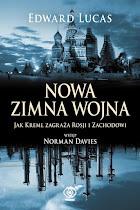Cyrillic
Letter writing
From The Economist print edition
Of orthography and politics
IF BULGARIA joins the European Union in three months' time, which the European Commission will recommend next week, it will mark a rare turn in the 15-year retreat of the Cyrillic alphabet. For Bulgarian will then become an official EU language—and it will bring with it the script named after St Cyril, a ninth-century Byzantine monk.
Cyrillic has been in retreat ever since it was dumped, along with Soviet rule, first by Moldova, and then by Azerbaijan. Tatarstan, a Turkic republic in the middle of Russia, tried, rebelliously, to switch to Latin letters when Kremlin rule was wobbling, but it has since been forced to change back. In Central Asia, Cyrillic still survives, although Uzbekistan officially wants to change. In Montenegro, Europe's newest country after its secession from Serbia this summer, the Latin alphabet is increasingly popular, although in theory both still have equal status.
Does it matter? Alphabets work best with the languages for which they were invented. Everywhere else, the result is a confusing fudge of strange clusters of consonants, vowels and diacritical marks. In Slavic languages using the Latin alphabet, the sh and ch sounds, single letters in Cyrillic, become head-splitting combinations of sz, cz, ci, si, ś, š, and ć, as in the Polish word szczęśliwy (meaning happy).
Bulgaria's transliteration is particularly chaotic. Nikolay Vassilev, the minister responsible for sorting it out, cites the town of Панагюрище, which can be transliterated in no fewer than seven different ways. The new system plumps for Panagyurishte. Being back on the map of Europe is one thing. Being consistently recognised by outsiders may be quite another.
























No comments:
Post a Comment